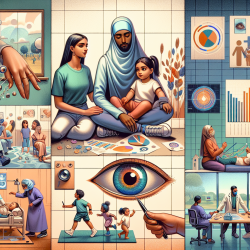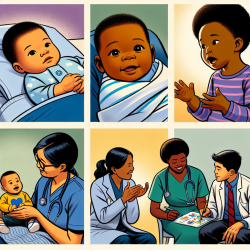Introduction
As professionals dedicated to improving health outcomes, it is imperative to stay informed about the latest research and its practical applications. The study titled "Transmission of multidrug-resistant tuberculosis within family households by DTM-PCR and MIRU-VNTR genotyping" provides valuable insights that can be leveraged to enhance our practice, particularly in understanding disease transmission and implementing effective interventions.
Understanding the Research
This study, conducted by Chen et al., focuses on the transmission of multidrug-resistant tuberculosis (MDR-TB) within family households in China. Using advanced genotyping methods like DTM-PCR and MIRU-VNTR, the researchers analyzed the transmission dynamics among family members. The findings reveal that close family contacts are at a significant risk of MDR-TB transmission, emphasizing the need for early diagnosis and effective treatment strategies.
Key Findings and Implications
- High Transmission Risk: The study highlights that family members of MDR-TB patients are at a high risk of infection. This underscores the importance of screening and monitoring close contacts to prevent further spread.
- Genotyping as a Tool: The use of genotyping methods such as MIRU-VNTR allows for a deeper understanding of transmission patterns, which can inform targeted interventions and policy decisions.
- Early Intervention: The research suggests that early diagnosis and prompt treatment of MDR-TB patients can significantly reduce transmission rates within households.
Applying Research to Practice
For practitioners, the implications of this research are clear. By integrating these findings into practice, we can improve health outcomes for our patients. Here are some actionable steps:
- Screening and Monitoring: Implement regular screening for TB among close contacts of MDR-TB patients. This proactive approach can help identify and treat cases early, reducing transmission.
- Education and Awareness: Educate families about the risks of MDR-TB and the importance of adhering to treatment regimens. Empowering patients with knowledge can lead to better health outcomes.
- Utilize Genotyping: Incorporate genotyping methods in clinical practice to better understand transmission dynamics and tailor interventions accordingly.
Encouraging Further Research
While this study provides valuable insights, there is always room for further exploration. Practitioners are encouraged to engage in or support additional research to continue advancing our understanding of MDR-TB transmission and treatment. Collaborative efforts can lead to more effective strategies and ultimately, better health outcomes for all.
To read the original research paper, please follow this link: Transmission of multidrug-resistant tuberculosis within family households by DTM-PCR and MIRU-VNTR genotyping.










